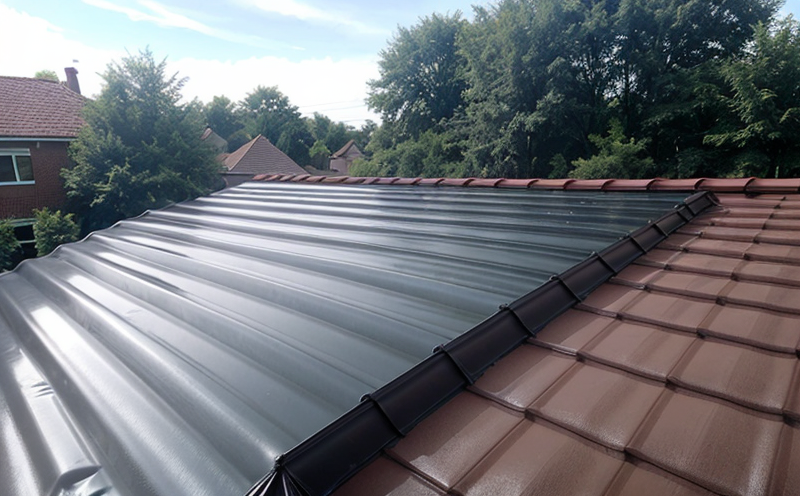ISO 23651 Liquid Applied Waterproofing Testing
The ISO 23651 standard is designed to evaluate the effectiveness of liquid-applied waterproofing systems used in building and infrastructure projects. This service ensures that these materials meet stringent performance criteria, thereby safeguarding structures against water ingress.
Waterproofing is a critical aspect of construction design, particularly for roofs, basements, and other areas subject to high moisture exposure. Liquid-applied membranes provide a flexible solution suitable for complex geometries, such as curved or irregular surfaces, which can be difficult to cover with traditional sheet materials.
The testing process involves several key steps. Initially, the substrate must be prepared according to specified guidelines. This includes cleaning and priming the surface, ensuring it is free from contaminants that could interfere with adhesion. Once prepared, a liquid-applied membrane is applied in accordance with manufacturer recommendations or industry best practices.
Testing typically involves multiple phases: curing time assessment, water resistance evaluation, and adhesion strength tests. Curing time is crucial as it determines the minimum duration required for the material to achieve full chemical cross-linking. Water resistance testing assesses the membrane's ability to withstand hydrostatic pressure without leakage. Adhesion strength ensures that the waterproofing layer remains securely bonded to the substrate, even under stress.
After application and curing, samples are taken for further analysis. These tests may include peel adhesion, tensile strength, elongation at break, and more. Each test provides critical insights into the material's performance characteristics. The results of these assessments are then compared against ISO 23651 guidelines to determine compliance.
Compliance with this standard is essential for ensuring the longevity and integrity of waterproofing systems in buildings and infrastructure projects. By adhering to these rigorous testing protocols, we contribute to safer, more durable structures that can withstand harsh environmental conditions over extended periods.
Scope and Methodology
| Test Parameters | Description |
|---|---|
| Curing Time Assessment | Determine the minimum time required for full chemical cross-linking. |
| Water Resistance Evaluation | Evaluate the membrane's ability to withstand hydrostatic pressure without leakage. |
| Adhesion Strength Tests | Ensure secure bonding of the waterproofing layer to the substrate. |
The ISO 23651 testing methodology is designed to ensure comprehensive evaluation of liquid-applied waterproofing systems. It covers various aspects such as curing time, water resistance, and adhesion strength. These parameters are critical in determining the effectiveness of the waterproofing membrane.
- Curing Time: Measures the duration needed for full chemical cross-linking.
- Water Resistance: Assesses the material's ability to withstand hydrostatic pressure without leakage.
- Adhesion Strength: Ensures secure bonding of the waterproofing layer to the substrate.
The testing process is conducted in a controlled environment, ensuring consistent results. Specimens are prepared according to ISO 23651 specifications and subjected to rigorous tests under standardized conditions.
Industry Applications
| Application | Description |
|---|---|
| Roofing Systems | Prevent water ingress in residential and commercial buildings. |
| Basement Waterproofing | Avoid water damage and mold growth in basement areas. |
| Below-Grade Walls | Ensure structural integrity of below-grade walls. |
Liquid-applied waterproofing systems find extensive application across various sectors, including building and infrastructure. These materials are particularly beneficial for roofings, basement waterproofing, and below-grade wall applications. By adhering to ISO 23651 standards, we ensure that these materials perform reliably under challenging conditions.
- Roofing Systems: Prevent water ingress in residential and commercial buildings.
- Basement Waterproofing: Avoid water damage and mold growth in basement areas.
- Below-Grade Walls: Ensure structural integrity of below-grade walls.
The use of these systems is essential for maintaining the durability and safety of structures. By implementing ISO 23651 testing, we can provide confidence that the materials used will perform as expected in real-world conditions.
Quality and Reliability Assurance
| Parameter | Description |
|---|---|
| Tensile Strength | Measures the material's resistance to tensile forces. |
| Elongation at Break | Indicates the material's flexibility and ductility. |
The quality and reliability assurance of liquid-applied waterproofing systems are paramount for ensuring long-term performance. Tensile strength and elongation at break are key parameters that influence the overall durability of these materials. By adhering to ISO 23651, we ensure that the products meet or exceed industry standards.
- Tensile Strength: Measures the material's resistance to tensile forces.
- Elongation at Break: Indicates the material's flexibility and ductility.
The testing process is rigorous and involves multiple stages, including specimen preparation, application, curing, and testing. Each step is meticulously documented to provide a comprehensive record of compliance with ISO 23651 standards.





